|
Sairag Saadprai, Supachai Vorapojpisut, Chaipat Srikajohnlap, Bunyong Rungroungdouyboon, "Design and Development of a Low-Cost Force Plate with Software Application for Analyzing Balance and Coordination Training for the Elderly", April 2021, Volume 24 Number 2, p.52-66. Abstract
The physical fitness of the elderly is more likely to deteriorate by aging. Balance and coordination exercise are important to maintain the strength of the musculoskeletal system, joints, and bones as well as to reduce the risk of falling. This study presents the development of a low-cost force plate with software application (Stand Balance) for analyzing balance and coordination training for the elderly. The structure of the force plate consists of load cell circuits connected with Node32s board as part of a signal measurement that sends wireless data via Bluetooth to analyze with LabView. The software application records real-time and displays data such as the patient’s weight and training information that could be sent to the healthcare provider who can analyze the patient’s information. The software has been designed in 4 operating modes (Balance Screening, Exercise, Games, and CoP Modes). The purpose of this study was to test whether the Stand Balance could detect Center of Pressure (CoP) and Ground Reaction Forces (GRFs) and display the results regarding its accuracy and repeatability. This research found that the error of static weight measurement is 4.84%, which is assumed to be an acceptable measure of the GRFs (especially when the human body is contact to the developed force plate). Moreover, the absolute error of CoP-accuracy of (Top Middle, Top Right, Middle Left, Center, Middle Right, Bottom Left, Bottom Middle, and Bottom Right) study areas are 5.14, 4.08, 5.44, 5.02, 5.88, 7.25, 4.49, 5.28, and 6.47 mm, respectively and the error of CoP-repeatability of study areas are 0.82, 0.74, 1.21, 0.95, 1.34, 0.89, 0.74, 1.13, and 1.18%, respectively. The absolute errors of CoP-accuracy are very close to 0 mm and the error of CoP-repeatability are less than 1.5%, which show high accuracy and precision that adequate for Stand Balance to assess balance and train coordination. It could ensure that the Stand Balance could detect CoP and GRFs effectively and, therefore, can be used as a device for further clinical implementation with human.
0 Comments
Pramodhyakul N, Luangpon N, Muengtaweepongsa S, Kaewsawang S, Kooncumchoo P., "Classification of walking ability in patients with stroke by walking distance from 6-minute walk test", 2020; 42(3) Sep-Dec: p.163-173. Abstract
ที่มาและความสำคัญ: ความสามารถการเดินโดยเฉพาะการเดินในชุมชนเป็นสิ่งสำคัญที่ส่งเสริมให้ผู้ป่วยโรคหลอดเลือดสมองมีส่วนร่วมทางสังคมเพิ่มมากขึ้น ดังนั้นการประเมินเพื่อบ่งชี้ระดับความสามารถการเดินสำหรับผู้ป่วยโรคหลอดเลือดสมองจึงเป็นสิ่งที่สำคัญ ซึ่งระยะทางการเดินที่ได้จากการประเมิน 6-minute walk test เป็นตัวแปรหนึ่งที่น่าสนใจสำหรับการแบ่งระดับความสามารถการเดินในผู้ป่วยโรคหลอดเลือดสมอง วัตถุประสงค์: เพื่อหาค่าตัดแบ่งของ 6-minute walk test ที่เหมาะสมสำหรับจำแนกระดับความสามารถการเดินในผู้ป่วยโรคหลอดเลือดสมอง วิธีการวิจัย: ผู้ป่วยโรคหลอดเลือดสมองระยะเรื้อรัง จำนวน 174 คน ได้รับการคัดเลือกเข้าสู่การศึกษา อาสาสมัครได้รับการประเมินความสามารถการเดินด้วยแบบประเมิน Functional walking category และ 6-minute walk test การศึกษานี้ใช้ สถิติ Receiver-operating characteristic (ROC) curve เพื่อหาค่าตัดแบ่งของ 6-minute walk test ผลการวิจัย: ผลการศึกษาพบว่าค่าตัดแบ่งของระยะทางการเดินในกลุ่มผู้ป่วยโรคหลอดเลือดสมองที่มีความสามารถการเดินในชุมชนมีค่าเท่ากับ 193.50 เมตร (ค่าความไว = 70.00 % และ ค่าความจำเพาะ = 94.35 %) สรุปผล: การศึกษานี้พบว่า ผู้ป่วยโรคหลอดเลือดสมองที่สามารถเดินได้อย่างน้อย 193.50 เมตร ใน 6 นาที จะมีความสามารถที่จะเดินในชุมชนได้ Aris Kanjanasilanont, Sirima Mongkolsomlit, Poramet Earde, Patcharee Kooncumchoo., "Differences in Grip Strength among Wheelchair Basketball Athletes: Variations by Hand Size and Handrim-Tire Diameter", Vol. 25 No.3 July - September 2020, Published 2020-11-03. Abstract
Wheelchair basketball is a popular sport for people with disabilities. Movement skills during competition require a suitable grip with the wheelchair wheels. An inappropriate handgrip may reduce performance. The objective of this study was to investigate the effect of 3 handrim-tire diameters on the handgrip strength in 3 hand sizes of wheelchair basketball athletes. Seventy-one wheelchair basketball athletes, 20-40 years old, with a Functions Determining Classification level of 1.0-4.5, and who have played wheelchair basketball for more than 1 year, were divided into 3 hand size groups; small (ฃ180 mm.), medium (190-200 mm.), and large (ณ230 mm.). Handgrip strength, local perceived discomfort, and comfort questionnaire for using hand tools were recorded for 3 handrim-tire diameters; 63 mm., 67 mm., and 71 mm. Descriptive data analysis and two-ways mixed-model ANOVA were used to analyze the data, including a posthoc analysis with Tukey's test. The highest grip strength for small, medium, and large hands was found for handrim sizes of 63, 67, and 71 mm., respectively. Grip strength for medium hand size was significantly higher when compared to small hand size in 3 handrim-tire diameters (p<0.01, p<0.001, p<0.001, respectively). Large hand size was significantly higher when compared to small hand size in handrim-tire 67 mm. (p<0.001) and 71 mm. (p<0.001). High discomfort was found for the following: small hand size with handrim-tire 67 and 71 mm., medium hand size with handrim-tire 63 mm., and large hand size with handrim-tire 63 and 67 mm. Handgrip strength and hand discomfort in each hand size were correlated to handrim-tire diameter. Mamom, J. "Digital Technology: Innovation for Malnutrition Prevention among Bedridden Elderly Patients Receiving Home-Based Palliative Care.", Vol. 47(10), Oct, 2020, p165-169. Abstract
In this innovative development design study, we aimed at examining the effects of digital technology in its use as a mobile nutrition application on the nutritional status and calorie intake for 60 Thai bedridden elderly patients receiving home-based palliative care. The elderly bedridden patients were randomized into two groups, a control group receiving routine care and an experimental group using the anti-malnutrition application. The data from a personal information record, the assessment form for body mass index, calorie intake calculation form and the record form for blood albumin levels were analyzed using descriptive statistics and t-test. The results showed that the calorie intake, blood albumin levels, and body mass index of the experimental group were significantly higher than those of the control group (p <.05). The results suggest that this application could solve the malnutrition problem in elderly bedridden patients and significantly enhance their caregivers' satisfaction. This mobile application for appropriate nutrition and calorie intake calculations can be used as a significant practical, effective health-associated innovation that promotes patients' nutritional status. It facilitates the monitoring of patients' nutritional status. It also provides caregivers with the knowledge and understanding they need to improve the home-based palliative care of the elderly bedridden patients, especially in the health crisis of the COVID-19 era. Pansuksawat N, Earde PT, Kooncumchoo P, Rungroungdouyboon B, Pramodhyakul N., "Effects of I-Walk training on gait performances in patients with chronic stroke", Oct 2020; 64(4): p.243-254. Abstract
Objective: To determine the effects of I-Walk (Robotic-assisted gait device) training compared with over-ground walking training on motor impairments assessed by lower extremity scores, lower extremity angles during walking, and gait performances in patients with chronic stroke. Methods: A single blinded randomized controlled trial was conducted. Twenty four chronic stroke patients were randomly assigned into two groups; experimental group (n=12) and control group (n=12). For gait performances, patients in an experimental group received I-Walk training, while those in a control group received over-ground walking training. The duration of training was 60 min per day, 3 days per week for 8 weeks. The outcome measures included motor impairments assessed by the Fugl-Meyer Assessment of Lower Extremity (FMA-LE) scores, lower extremity angles during walking (hips, knees, ankles), and gait performances (step length, cadence, walking speed, stride length, and step length symmetry ratio). All variables were measured before and after the training period. Results: There was a statistically significant difference in motor impairments assessed by the FMA LE scores, lower extremity angles during walking on hips and knees, as well as gait performances, including step length, cadence, and walking speed, between the experimental and the control groups (p<0.05). In particular, the statistically significant changes were demonstrated in motor impairments assessed by the FMA-LE scores, lower extremity angles during walking on hips, knees, and ankles, as well as gait performances, including step length, cadence, walking speed, stride length, and step length symmetry ratio, before and after the I-Walk training in the experimental group (p<0.05). Conclusions: The I-Walking training could yield a statistically significant improvement of motor impairments assessed by FMA-LE scores, lower extremity angles during walking, and gait performances in chronic stroke patients. Nonetheless, further studies are recommended to elucidate and ratify the effective outcomes in patients with other stages of stroke, different ranges of lower extremity, and various spatiotemporal parameters. https://he02.tci-thaijo.org/index.php/VMED/article/view/230686 Jinpicha mamom and Bunyong Rungroungdouyboon, "Design and Development of Lateral Tilting Mechanical bed for rural bedridden patients in Thailand" Vol. 47. No. 9., September 2020 Abstract
Tissue injury is a complication that causes excessive interface pressure on a bony prominence and usually occurs in immobilized patients, especially the bedridden ones in home-based care. Objective: To investigate the efficacy of a lateral tilting mechanical bedin decreasing interface pressure over bony prominences in bedridden patients who use these beds. Design: Repeated-measures,intervention, and outcomes measure research design. The sample consisted of 40 home-based bedridden people from September2017 to December2018.Data from personal information and interface pressure records were analyzed usingdescriptive statistics, t-test, and Mann–Whitney Utest. The lateral tilting mechanical bed was created by a multidisciplinary team to develop a patient bed model that can adjust the head and knee and turn to the left and right using electrical systems. The results showed that the experimental group's interface pressure was significantly lower compared to the control group (p< .01).The findings revealed that this health care innovation improved the quality of care for bedridden people and reduced workloads and the risk of danger for caregivers. Sairag SA-ADPRAI, Bunyong RUNGROUNGDOUYBOON, "The Design and Development of Sit to Stand Trainer for the Elderly", Volume 17, Number 8, August 2020, p760-775 Abstract Strengthening exercise for lower limbs is required in elderly. Repeated sit to stands could improve lower limbs strength, reduce limitations, and fall. The researchers developed a Sit to Stand Trainer, a device that assists and offers variable levels of weight support for users to stand. It was validated by comparing the kinematics and the kinetics between 2 experimental conditions; the movement that was assisted by Sit to Stand Trainer (STST) and the natural movement that was unassisted by Sit to Stand Trainer (No STST). This study is an Experimental Design using Pearson Correlation Coefficient. The time span of the observed movement was 2.5 s for all trials. The results in kinematics showed significant similarity in trunk, hip, knee, ankle angles and angular velocities including speed and distance of head between No STST to STST (P = 0.000). However, in kinetics, the maximum of vGRFs showed significant decrease in STST compared to No STST (P = 0.000). This represent that this device produces natural movement and speed. It also supports and helps to reduce the body weight that contacted to the ground in order to stand up easier. Thus, therapists could possibly consider this device for training in clinical practice. This research was studied within 6 weeks into training with Sit to Stand Trainer. This part of the study is a Quasi-Experimental Designs using Paired Samples T-tests. The results of the T-tests were compared before and after the training. The results showed a significant improvement in physical outcomes measurement tests; Berg Balance Scale (P = 0.000), 30-second Chair Stand (P = 0.001) and 4-meter Gait Speed (P = 0.000) among the elderly. DOI: https://doi.org/10.48048/wjst.2020.6145 International Transaction Journal of Engineering, Management, & Applied Sciences & Technologies6/29/2020 Attakorn Suwananthawong and Dulyachot Cholaseuk, "A STUDY ON ERGONOMIC EGG-SHAPED FOUR-BAR LINKAGE PROPULSION MECHANISM FOR MANUAL WHEELCHAIRS" , 29 June 2020. Abstract
Most manual wheelchair users use conventional push-rim wheelchairs. Although manual push-rim wheelchairs help promotes a good lifestyle, the non-ergonomic, high muscular demand of non-continuous push motions can trigger severe upper extremity injuries. In this study, a new four-bar linkage propulsion mechanism is introduced. The mechanism was designed to provide continuous propulsion while allowing the wrist movement to follow the ergonomic egg-shaped path. A prototype was built and tested. User opinions indicated that they experienced a more comfortable ride than in the conventional push-rim wheelchair. Overall, the use of the four-bar linkage mechanism causes less strain to muscles and should reduce fatigue during prolonged usages. mamom J., Ruchiwit M, Hain D. "Strategies of Repositioning for Effective Pressure Ulcer Prevention in Immobilized Patients in Home-Based Palliative Care: An Integrative Literature Reviews", June 2020 Abstract
An integrative literature review was conducted to assess available scientific evidence about best strategies of repositioning along with medical devices in the prevention of pressure ulcers in immobilized patients in home-based palliative care. It is important to have evidence-based strategies and principles to prevent pressure ulcers in immobilized patients receiving homebased palliative care. However, there is a lack of consistency in protocol especially in Thailand. This review was done first by searching related literature through electronic databases including Cochrane, PubMed, Web of Science, Scopus, MEDLINE, ProQuest, and CINAHL that were published between 2010 and 2019. The PRISMA guidelines were used to structure the review. The findings of the review indicated that the best method or repositioning was 30° lateral tilt every 2-3 hours. However, alternative strategies, such as a combination involving medical devices such as a special mattress or automatic bed that can extent the duration of repositioning from every two hours to three to four. There is a need for further research examining the effectiveness of 3-hourly repositioning with use of a medical device that could reduce risk of pressure ulcers while reducing the burden on family caregiver. Teerapan Sosakul, Jintamai Suwanprateeb, Bunyong Rungroungdouyboon, Pongsatorn Tuchpramuk, Waraporn Suvannapruk, Autcharaporn Srion, "Evaluation of tissue ingrowth and reaction of a porous polyethylene block as an onlay bone graft in rabbit posterior mandible", Apr. 2020:50(2), p106-120 Abstarct
Purpose: A new form of porous polyethylene, characterized by higher porosity and pore interconnectivity, was developed for use as a tissue-integrated implant. This study evaluated the effectiveness of porous polyethylene blocks used as an onlay bone graft in rabbit mandible in terms of tissue reaction, bone ingrowth, fibrovascularization, and graft-bone interfacial integrity. Methods: Twelve New Zealand white rabbits were randomized into 3 treatment groups according to the study period (4, 12, or 24 weeks). Cylindrical specimens measuring 5 mm in diameter and 4.5 mm in thickness were placed directly on the body of the mandible without bone bed decortication, fixed in place with a titanium screw, and covered with a collagen membrane. Histologic and histomorphometric analyses were done using hematoxylin and eosin–stained bone slices. Interfacial shear strength was tested to quantify graft-bone interfacial integrity. Results: The porous polyethylene graft was observed to integrate with the mandibular bone and exhibited tissue-bridge connections. At all postoperative time points, it was noted that the host tissues had grown deep into the pores of the porous polyethylene in the direction from the interface to the center of the graft. Both fibrovascular tissue and bone were found within the pores, but most bone ingrowth was observed at the graft-mandibular bone interface. Bone ingrowth depth and interfacial shear strength were in the range of 2.76–3.89 mm and 1.11–1.43 MPa, respectively. No significant differences among post-implantation time points were found for tissue ingrowth percentage and interfacial shear strength (P>0.05). Conclusions: Within the limits of the study, the present study revealed that the new porous polyethylene did not provoke any adverse systemic reactions. The material promoted fibrovascularization and displayed osteoconductive and osteogenic properties within and outside the contact interface. Stable interfacial integration between the graft and bone also took place. |
Archives
May 2023
Categories |
HoursM-F: 7am - 7pm
|
Telephone+66-(0)-2564-3001 ถึง 9 ต่อ 3247
|
|





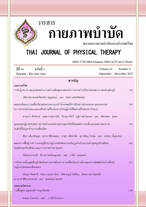

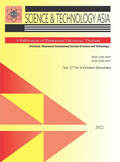

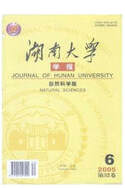

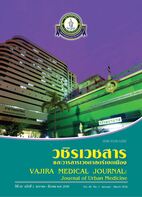

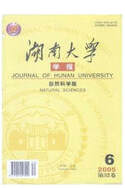

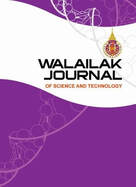
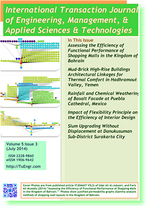
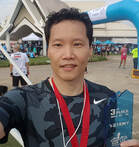
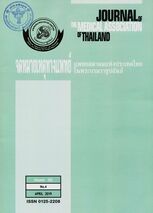


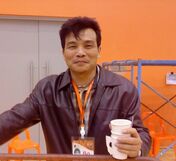
 RSS Feed
RSS Feed